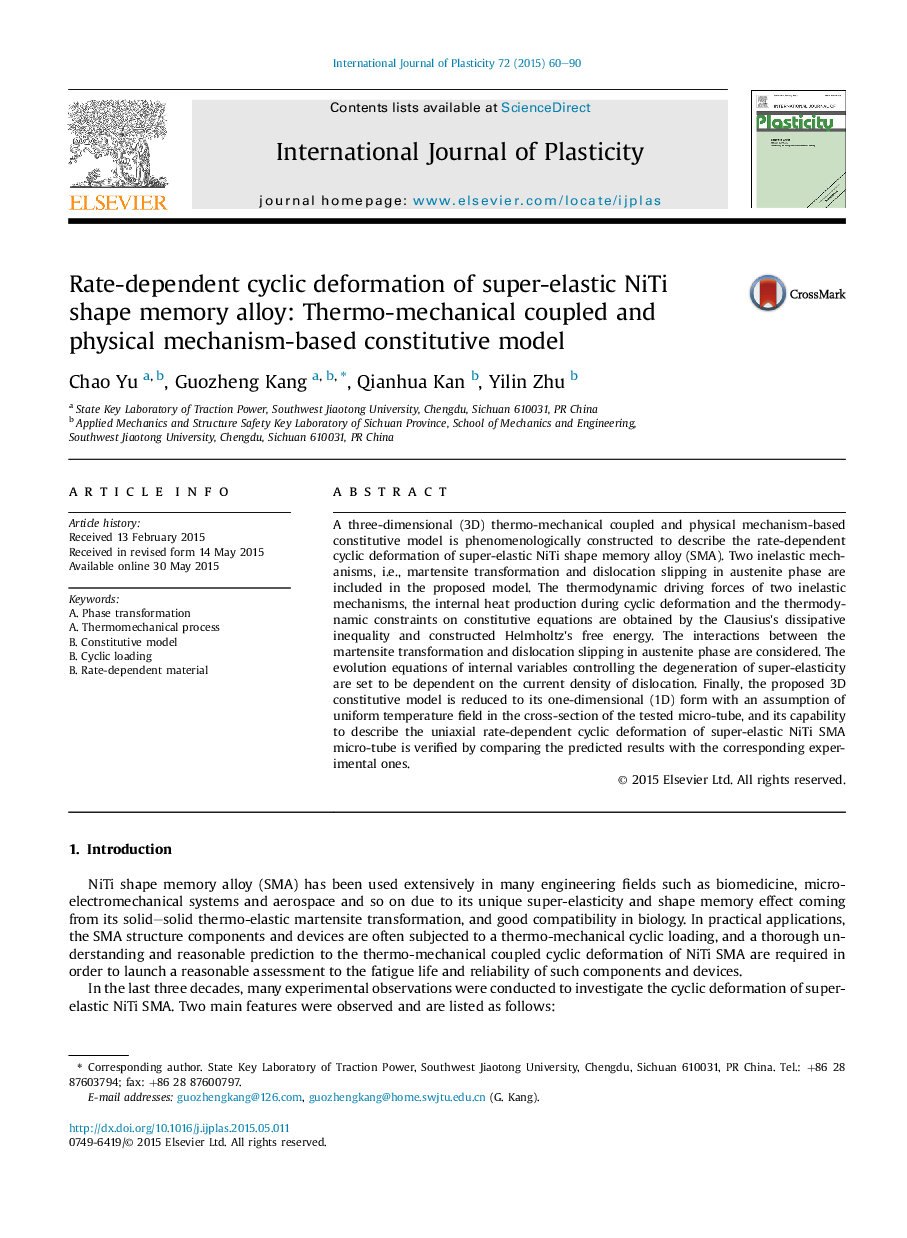| Article ID | Journal | Published Year | Pages | File Type |
|---|---|---|---|---|
| 784376 | International Journal of Plasticity | 2015 | 31 Pages |
•A macroscopic and physical mechanism-based constitutive model is constructed.•Internal heat production caused by latent heat and mechanical dissipation are considered.•Interactions between martensite transformation and dislocation slipping are considered.•Rate-dependent cyclic deformation of super-elastic NiTi tube is predicted well.•Evolution of the average temperature and temperature distribution are predicted well.
A three-dimensional (3D) thermo-mechanical coupled and physical mechanism-based constitutive model is phenomenologically constructed to describe the rate-dependent cyclic deformation of super-elastic NiTi shape memory alloy (SMA). Two inelastic mechanisms, i.e., martensite transformation and dislocation slipping in austenite phase are included in the proposed model. The thermodynamic driving forces of two inelastic mechanisms, the internal heat production during cyclic deformation and the thermodynamic constraints on constitutive equations are obtained by the Clausius's dissipative inequality and constructed Helmholtz's free energy. The interactions between the martensite transformation and dislocation slipping in austenite phase are considered. The evolution equations of internal variables controlling the degeneration of super-elasticity are set to be dependent on the current density of dislocation. Finally, the proposed 3D constitutive model is reduced to its one-dimensional (1D) form with an assumption of uniform temperature field in the cross-section of the tested micro-tube, and its capability to describe the uniaxial rate-dependent cyclic deformation of super-elastic NiTi SMA micro-tube is verified by comparing the predicted results with the corresponding experimental ones.
